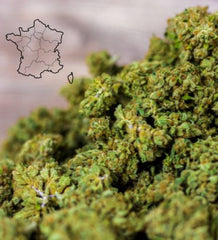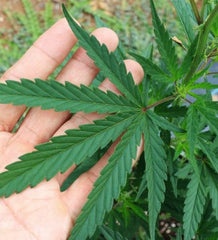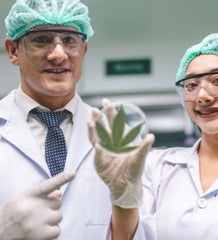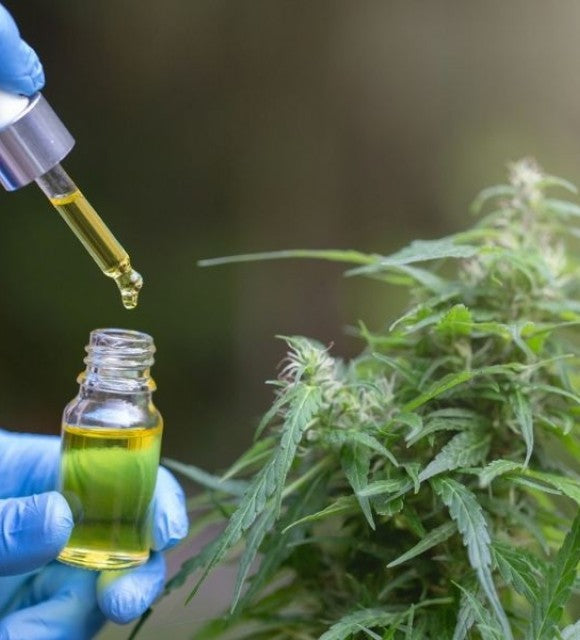
CBD Oil: Its Different Extraction Processes
Growing and harvesting hemp
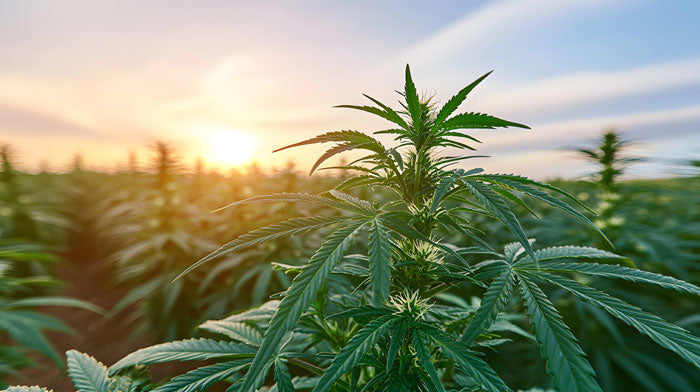
In order to obtain high-quality CBD oil , it is necessary to have a high-quality hemp plant as well . A good-quality hemp plantation begins with genetically stable hemp varieties to ensure a strong strain that can adapt to the planting soil. The composition of the soil is indeed a determining factor for the final quality level of the hemp. The pH of the soil must be between 6 and 7.5 in order to obtain the best growing conditions. An ideal soil is composed of a homogeneous mixture of sand and silt, which must provide good aeration and be moist at all times.
The location factor is also essential, since hemp is a plant that requires a lot of sunlight to grow. It requires at least 12 hours of exposure per day for optimal growth. The practices used to grow hemp can vary greatly depending on the region and country. That's why it's important to select oils that are manufactured in a location that complies with current regulations to ensure the quality of the plant . Plants are generally ready for harvest after 4 months.
What does CBD extraction involve?
As the name suggests, CBD extraction is a process that involves removing CBD from the plant . The goal is to transform the CBD into a usable product in the form of oil or cream, depending on the methods chosen.
Each method gives a different result, with CBD being more or less oily, thick and dark.
What are the different methods for extracting CBD oil?
CBD oil is becoming increasingly popular with consumers who have heard of its many benefits. But extracting this precious liquid from hemp requires following very specific extraction processes to ensure the quality of the extracted oil is not compromised . Here are the three main methods for extracting CBD from hemp.
Extracting CBD from hemp using liquid solvents
To extract CBD using liquid solvents, it is necessary to use ethanol or propane, butane, isopropyl or alcohol . A very simple method to carry out and which is also inexpensive. On the other hand, it is the most dangerous extraction process since you will need highly flammable solvents in large quantities. The goal is to dissolve the plant's own vegetable waxes in order to extract the nutrients. Thanks to this process, it is possible to extract not only the cannabinoids , but also the chlorophyll of the plant. The manufacturing process therefore gives a bitter taste to certain products.
To perform this type of extraction, simply place the flowers and the hemp plant itself in a large container and cover everything with a solvent that will extract the cannabinoids. These will then be recovered through an evaporation process that will produce a concentrated oil. The second drawback, and not the least, is that the process of manufacturing CBD oil using solvents must be monitored with the utmost care. Indeed, if any solvent residue remains, it can be toxic.
CBD CO2 extraction process
Also known as the supercritical fluid extraction process, CBD is extracted using carbon dioxide , a colorless and odorless gas that, when exposed to low temperatures and high pressure, reverts to a liquid state. The cannabis plants are then immersed in liquid CO2, which dissolves the plant matter. The naturally occurring substances in hemp, including CBD, will then be assimilated into the liquid CO2. All that remains is to recover the liquid and modify the pressure and temperature conditions to extract the cannabinoids from the liquid CO2 before it is transformed into gas.
Extracting CBD oil using cooking oil
Finally, another method is to use edible oil such as olive or sesame oil. This process has the advantage of being able to provide the organoleptic properties specific to the oils used. In addition, this process allows CBD oil to be extracted without leaving any residue. The CBD extraction process using olive oil is the oldest process in existence and offers a simple and inexpensive method that achieves excellent results.
It all starts with the decarboxylation of hemp, which is achieved by heating to a specific temperature to activate the substances naturally present in the plant. Edible oil is then added and the whole thing is heated again to extract the cannabinoids. The fact that the oil is not evaporated means that the resulting CBD oil has a lower CBD content. Therefore, you need to consume more of it to ingest the same amount of CBD as with oil extracted by evaporation. In addition, it is perishable and must therefore be stored in a cool, dark place.
Extract CBD oil by cold pressing
The cold-pressing method involves freezing CBD flowers before crushing them under pressure. This method requires no solvents. However, this method is rarely used because it doesn't produce high yields, as it requires a lot of material to produce a small amount of oil.
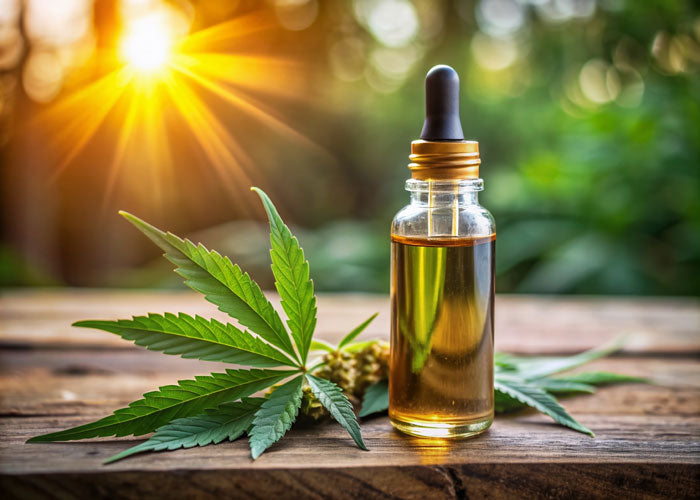
What happens to CBD after extraction?
Once the raw CBD oil is extracted, it will still need to undergo some processing before it can be consumed in the best conditions . In fact, it will be refined using a process called wintering which eliminates both solvents, but also waxes, chlorophyll and all other unwanted substances. In the end, it will be possible to obtain a high-quality hemp oil with a CBD content of between 70 and 90%.
Not all oils are created equal, however. It is possible to create different types of hemp-based oils. These include full-spectrum CBD , which contains all the cannabinoids and compounds naturally present in the plant, such as amino acids and traces of THC. Broad-spectrum CBD, on the other hand, has a similar composition, but without any traces of THC . It is therefore of a purer quality.
To obtain a broad-spectrum CBD oil , simply add a step to the manufacturing process: liquid chromatography. This process allows for the targeted removal of THC without compromising the benefits of the oil.
You now know the different extraction processes used to extract CBD oil. While these methods are all effective, some still produce a purer, more toxic-free product that's much more suitable for consumption.
What is the best way to extract CBD?
To reap all the benefits and therapeutic virtues of CBD, it is essential to choose a quality oil or product . However, the extraction method is not the only factor that will determine the quality of the final oil or product.
The choice of raw material is even more important. This is why it is important to choose a variety rich in CBD, produced in an eco-responsible way, without pesticides or chemicals .
Regardless of the manufacturing process, each method has advantages and disadvantages . However, professionals and specialists tend to prefer CO2 extraction, which produces a highly concentrated oil without any risk of toxicity.



